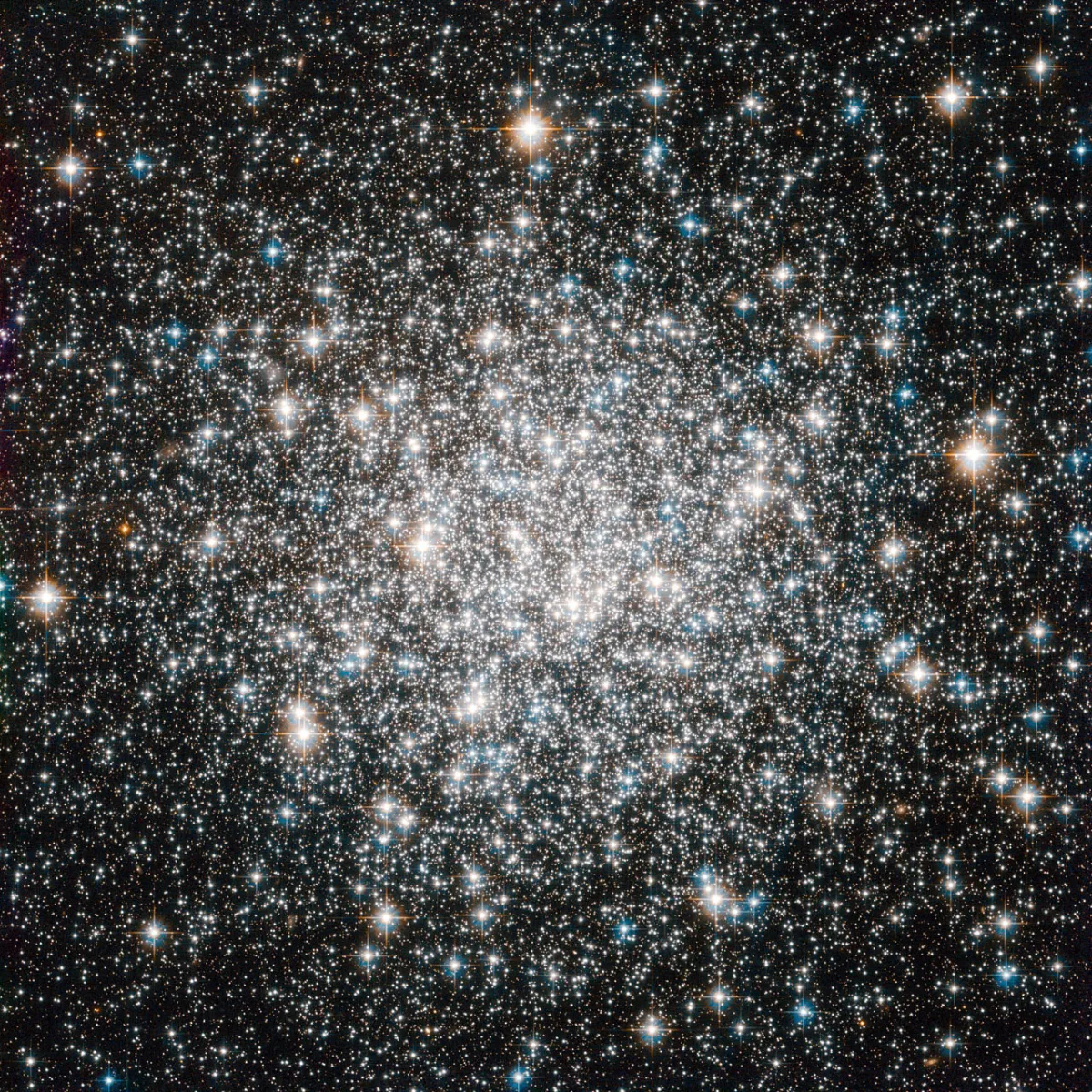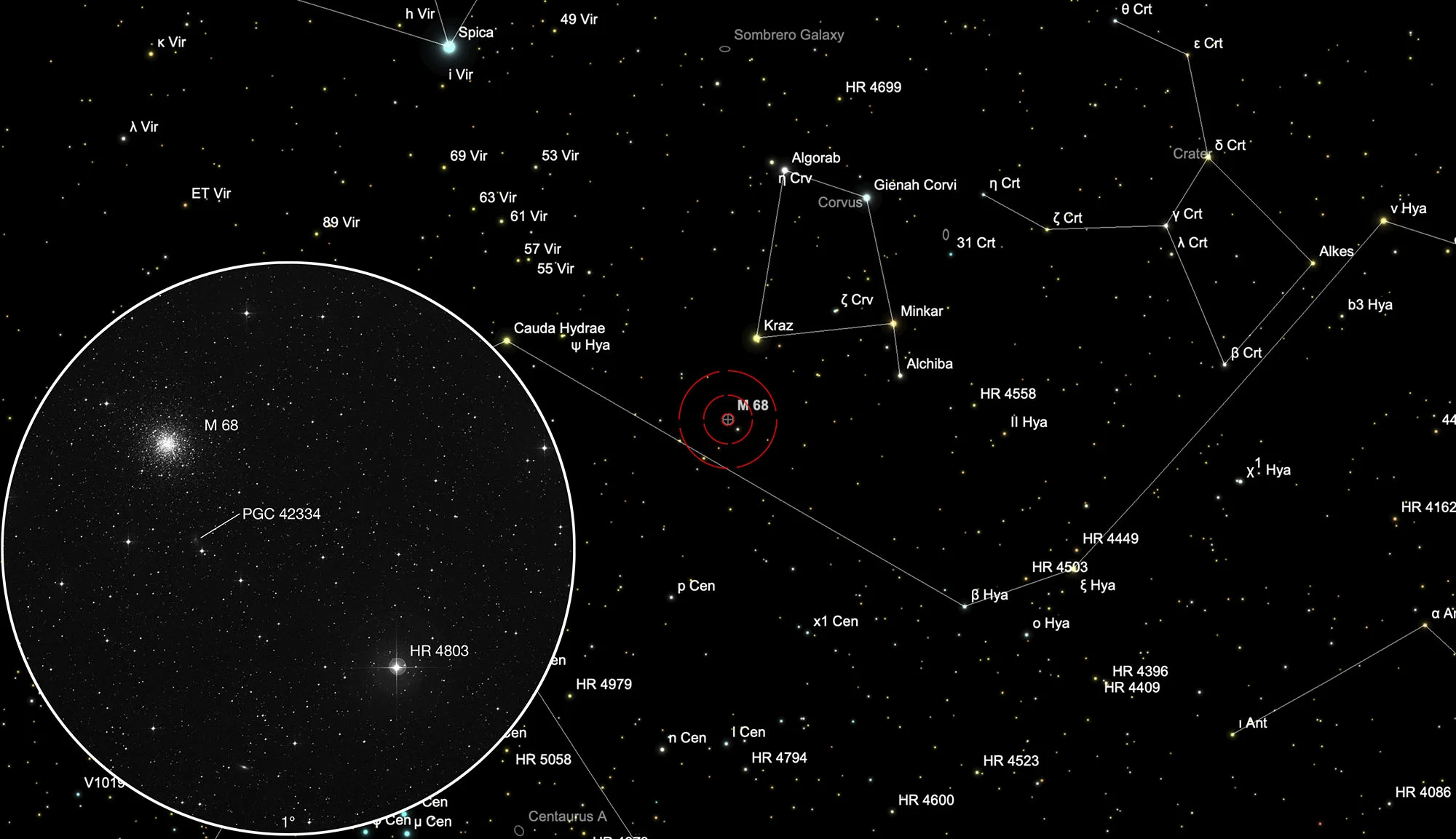Globular Cluster Messier 68

History
The globular cluster M 68 was discovered on 9 April 1780 by Charles Messier, who wrote: «Nebula without stars under the raven and the water snake; it is very weak, very difficult to see with the telescope; next to it is a star 6th magnitude.» [281] William Herschel wrote: «A beautiful star cluster, extremely rich and so compressed that most of the stars are mixed together. it is nearly 3' wide and about 4' long, but mostly round, and there are very few stars scattered around.» [217]
Physical Properties
The distance from M 68 is about 10.3 kpc (33'600 light years) and it is moving towards us at about 93 km/s. The mass is 223'000 times that of the sun. [251] 50 variables were found in the star cluster. [282] [282]
| Designation | NGC 4590 |
| Type | GCL (X) |
| Right Ascension (J2000.0) | 12h 39m 28.0s |
| Declination (J2000.0) | -26° 44' 32" |
| Diameter | 11 arcmin |
| Visual magnitude | 7.3 mag |
| Metric Distance | 10.300 kpc |
| Dreyer Description | globular, L, eRi, vC, iR, rrr, st 12 |
| Identification, Remarks | h 3404; GC 3128; M 68; GCL 20; ESO 506-SC30 |
Galaxy PGC 42334
The small, faint galaxy PGC 42334 is only about 10 arc minutes away.
Finder Chart
M 68 lies in the constellation Hydra. To find it, connect the stars Algorab (η Corvi) - Kraz (β Corvi) by 3.5 ° to the south. It is best seen from December to September.
